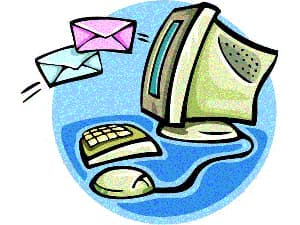By Howard Mavity
Electronic communications are a mixed blessing.
Business is more efficient and new ways of commerce continue to open. However, ubiquitous electronic communications have eroded our personal time and presented near-addicting distractions.
From a legal standpoint, electronic communications, and especially email, not only creates damaging evidence but may even contribute to legal claims.
The role of email in the workplace
Email (and increasingly, text messaging) allow us to quickly send detailed responses in a fraction of the time it may take to talk. It allows one to send messages in the wee hours of the morning when one could not call the other party.
On occasion, a complex topic requires a written explanation or the recipient may be a visual learner who needs to read the instructions. Or perhaps you want to set the tone or provide essential background before engaging in the serious discussion and analysis with others.
As a lawyer, I readily admit to crafting my clients’ email communications to build a paper trail or to establish a necessary legal framework. Perhaps the issue is a sensitive legal point and you want no misunderstanding. All are valid ways to use email.
Using email to avoid a talk
Of course, we may also use email when we simply do not want to talk to a person.
Perhaps the person drones on and you simply don’t have the time to chat. Perhaps you consider yourself a cut-to-the chase kind of manager and don’t believe that you have the time for pleasantries. Perhaps the person has a difficult personality and you are trying to avoid conflict.
Maybe you’re just swamped. And … sigh … how many of us foolishly multitask by sending emails while in a meeting or on the phone? I confess my guilt and my increasing acceptance of the fact that one often doesn’t multi-task, but rather only does a half (or halfway) job on both tasks.
So email is not bad. Email is simply a tool and can be used properly or improperly.
Properly using the tool
The proper use of email in communications has been on my mind this week because I have seen situations where the email process exacerbated a situation because of the lack of real time back and forth, or, because an employee responding was not acting in good faith and was using the email to prevent amicable resolution. Therefore, I will provide some rules and guidance on the proper use of this tool.
- In a perfect world, I’d tell you to draft every email as if it will later be an exhibit in a trial — because it may in fact end up as evidence. I’ll settle for you stopping and thinking in this manner about emails which deal with discipline, counselling, accommodation, complaints and investigation, serious safety matters, and similar “HR and Safety” topics.
- Always ask yourself, “should I be making this communication in person or over the phone?” “Do I have a specific reason to use email?”
- If you have more than one reason for using email, determine the main reason because your purposes may conflict with one another. As an example, are you trying to build evidence or document your response? Or is the principal goal to defuse a situation or to genuinely show employer interest and respond to a concern? These two goals may conflict with one another.
- These questions become more important when the recipient is a complaining employee.
- Email is “tone deaf.” If the matter is sensitive or inflammatory, think through how a reasonable person will receive the message. Does the message unintentionally come across as brusque or dismissive?
- What about “perception?” As another example, does the email read as if you were attempting to engage in the interactive process to discover a possible reasonable accommodation, or does it look as if your mind is already made up? Does the email suggest the employer’s good faith or due diligence, or does it appear uninterested? Does a discussion of the costs of abatement of a hazard appear to be a reasonable determination of feasibility and the most prudent way to expend capital, or does it appear that the employer is callous and putting money ahead of safety? Remember, we are not talking about your intent, we are talking about perception and how the communication may be spun.
- Also consider how an unreasonable person might respond to an email. Sometimes, no matter what you type, the person will find something objectionable and the communication will throw fuel on the fire or be misused as evidence against you. A very short email response or the use of other communication method may be wise.
- Admittedly, sometimes email is the only way to respond for any number of reasons, but when the other person is in any way reasonable, a face-to-face meeting allows you to read their expressions and revise your approach.
My conclusion? Think carefully about your emails, especially in the HR setting, and use the tool properly.
This was originally published on Fisher & Phillips’ Workplace Safety and Health Law Blog.
